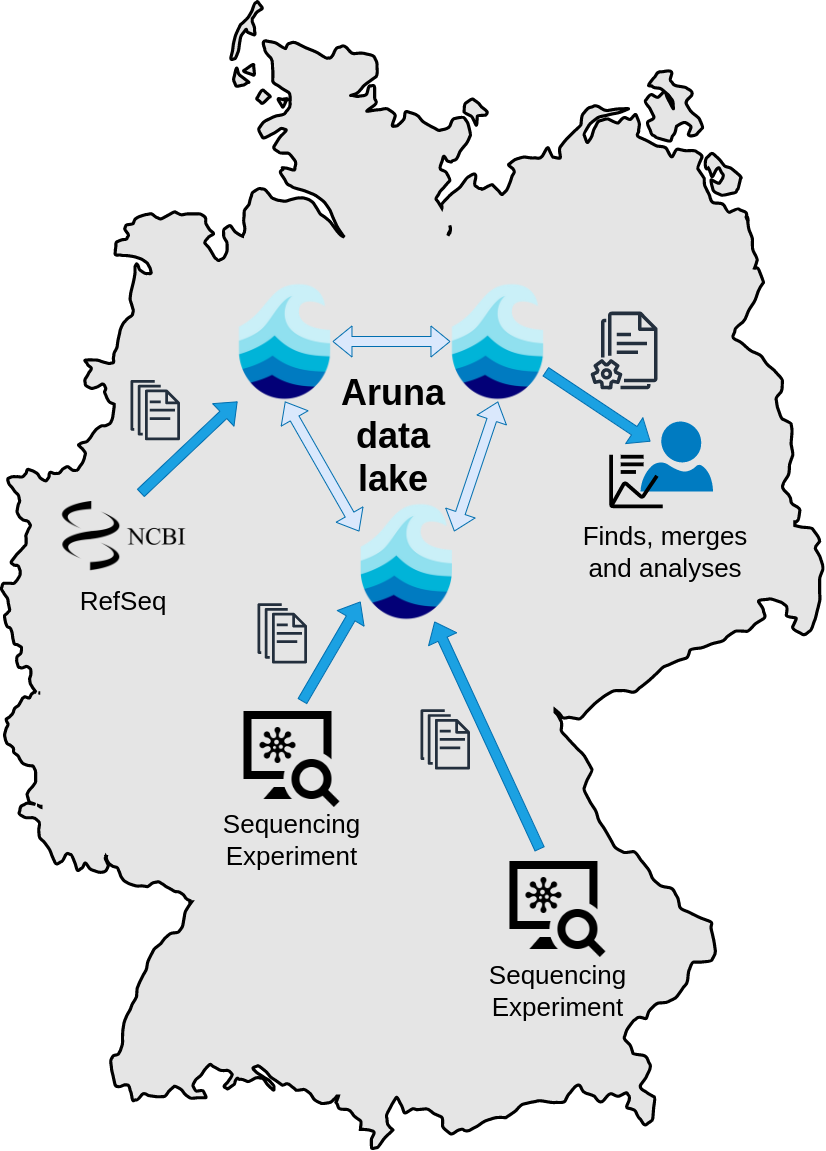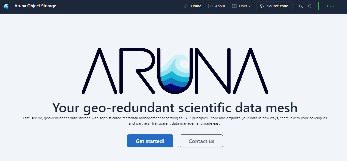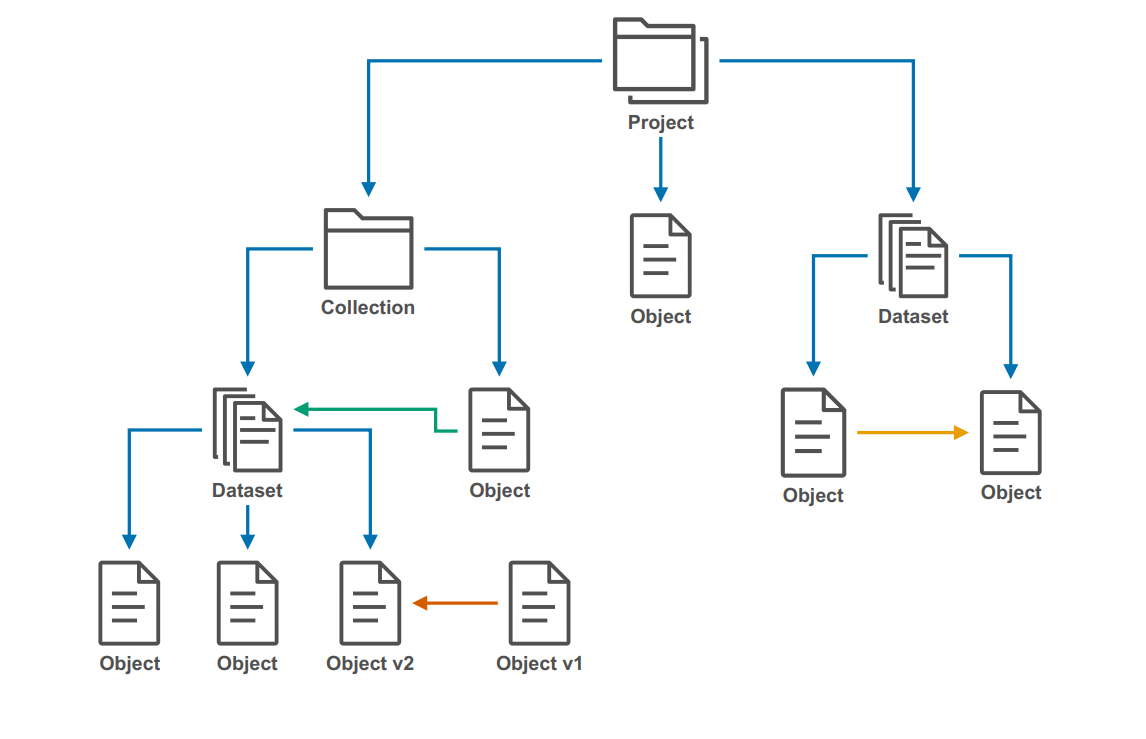RDC Integration
The Aruna Object Storage (AOS) is part of the cloud layer of the RDC. It is an object storage designed as open source storage platform that allows scientists to store, annotate and share their data according to the FAIR principles.
Overview
Getting started
User Guide
Basically, AOS is intended as a data backend for the RDC. For this reason, very few end users will use AOS directly. Data import, verification, transformation and processing is basically possible via the services in the mediation layer. This also ensures the consistency of the data. Users and services can be informed about changes to individual data objects or even entire projects via the AOS notification service and can thus react to these changes.
Developer Guide
The current documentation for using AOS is linked from the AOS home page at https://aruna-storage.org. This contains a complete description of the API. AOS consists of five main components: AOS Server, AOS Proxy, AOS API (and its S3 interface), AOS CLI and AOS Notification System. Of these components, the AOS team installs and maintains the servers and associated databases. AOS proxies can then be installed at various locations, which then communicate with the servers in each case. The actual data traffic from and to the storage backend then takes place via the AOS proxies. The interaction between a client and the proxies/servers takes place via the AOS API. To reduce the entry barrier, there is a command line interface called AOS CLI, which encapsulates API calls. Moreover, an S3 interface was implemented, since many software packages already support data storage via S3 as industry standard. Finally, the AOS notification system will soon be released to allow immediate response to changes in the AOS. This can be, for example, a data verification that is automatically initiated when a data upload is complete.
AOS infrastructure
The main component of AOS is a distributed database system. It synchronizes all data between several computers at different locations and thus generates fail-safety via this redundancy. This database is regularly backed up. The actual data can also be synchronized across multiple sites to provide redundancy. Nevertheless, all data will also be stored at one location in a redundant system. Due to the fact that data cannot be overwritten, but new versions of the data are then created, in combination with the redundant data storage at multiple levels, no backup of the data is currently performed. An implementation at a later date is currently being discussed.
AOS data structure
AOS organizes data in Version 1.x into Projects, Collections, Object Groups, and Objects, starting with version 2.x the data structure will be even more flexible and are organized into Projects, Collections, Datasets, and Objects with a more flexible relation model.
UML diagram of the Aruna Object Storage data structure in Version v1.0.x
UML diagram of the Aruna Object Storage data structure starting in Version v2.0. All resources form a directed acyclic graph of belongs to relationships (blue) with Projects as roots and Objects as leaves. Resources can also describe horizontal version relationships (orange), data/metadata relationships (yellow) or even custom user-defined relationships (green).
References
Links:
- Dokumentation and Aruna start page: https://aruna-storage.org
- Source-Code: https://github.com/ArunaStorage




